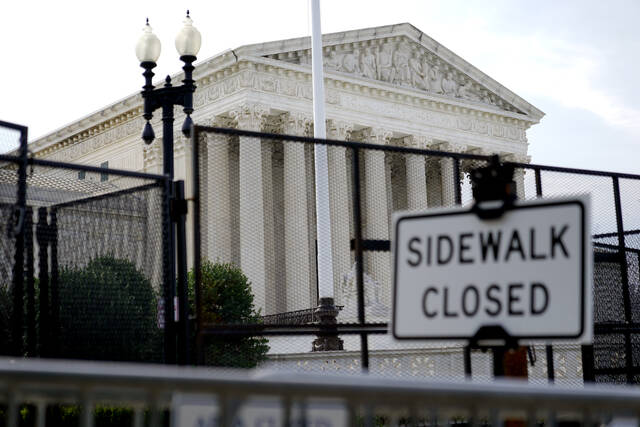Lori Falce: The cautionary tale of Supreme Court precedent
We like to think of the law as something resolute as stone, strong as a diamond, immutable as iron.
The law is the law. If it is flexible, what is the point? The law has to provide us the framework for society to function, and it cannot do that if it is built of balsa instead of rebar, right?
But stone can wear away. Diamonds only need pressure in the right spot to fracture. Iron can endure a lot — until the temperature is hot enough for it to melt. Time and conditions change everything.
The law is the same. The final days of the U.S. Supreme Court’s term showed that as decision after decision overturned a lower court’s verdict or a long-held foundational ruling, including Roe v. Wade. It has prompted many people to rail about settled law and the doctrine of stare decisis — the idea that rulings are built on settled precedent.
That overlooks one simple fact. The entire point of the court is to continually refocus the lens of the law — something that makes strict constructionism all but impossible in a society that refuses to stay stolidly in 1787. The law passed today must be reinterpreted tomorrow in a way that makes sense for how things have changed.
Because of that, law cannot be solid as stone. If precedents were not overturned, we would still have separate drinking fountains and segregated schools (Brown v. the Board of Education of Topeka). Illegally obtained evidence would be fine to present in court (Mapp v. Ohio). Internet stores could operate in one state while selling in another to avoid collection of sales tax (South Dakota v. Wayfair).
But overturning precedent should be about moving forward, not backward.
In its split decision on Vega v. Tekoh, the court gutted a precedent that every kid playing cops and robbers can recognize. Miranda v. Arizona was a 1966 ruling that gave us the familiar words of an arrest — “You have the right to remain silent.”
In a post-George Floyd world where tension between communities and law enforcement is high, eroding 56-year-old guidance seems questionable, if not outright dangerous.
The Roe verdict may be heralded as a victory for anti-abortion camps but has dangerous implications for other rulings that hinge on the 14th Amendment. Justice Clarence Thomas spelled them out specifically, suggesting the court go for other decisions made regarding the amendment’s “due process” clause, which protects people from the overreach of the government.
That puts birth control (Brandenburg v. Ohio), gay rights (Lawrence v. Texas) and same-sex marriage (Obergefell v. Hodges) in peril. But those aren’t the only decisions that balance on the razor’s edge of the 14th Amendment. So does Brown. So does Mapp. So does Griswold v. Connecticut, the foundation of many privacy claims.
And perhaps most germane to Thomas — only the second Black man to serve on the court of the 115 justices in its history — there is Loving v. Virginia, the 1967 decision that allowed interracial marriage. Twenty years later, Thomas married his second wife, Ginni; that wedding would be illegal without the Loving decision.
It isn’t that laws can’t change. They can, and they should. Imagine if you could only legally drive your car as fast as a horse could safely trot. But rolling decisions backward puts us in danger of becoming a cautionary tale; no country that backpedals fares well in the history books.
Lori Falce is the Tribune-Review community engagement editor and an opinion columnist. For more than 30 years, she has covered Pennsylvania politics, Penn State, crime and communities. She joined the Trib in 2018. She can be reached at lfalce@triblive.com.
Remove the ads from your TribLIVE reading experience but still support the journalists who create the content with TribLIVE Ad-Free.

